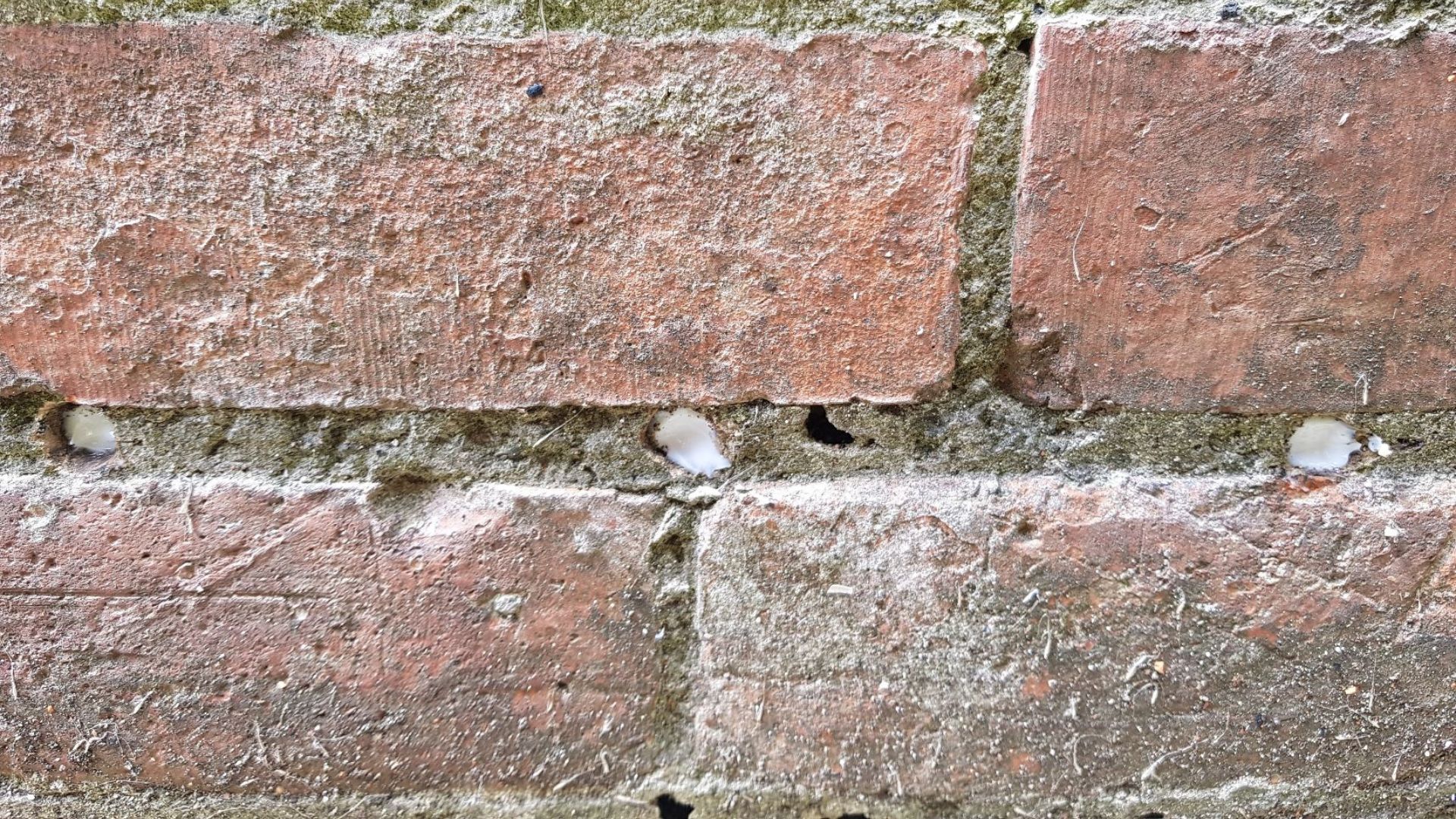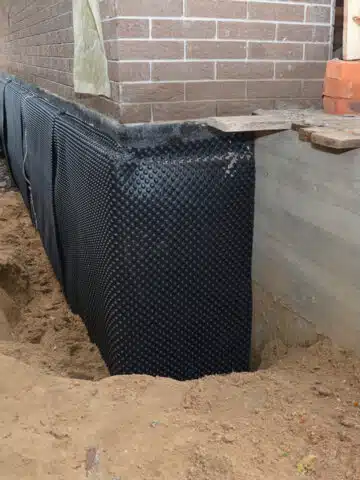All you need to know about choosing the right damp specialist newcastle for your building
All you need to know about choosing the right damp specialist newcastle for your building
Blog Article
Understanding the Relevance of Damp Proofing in Preventing Structural Damage
Wet proofing functions as an important protection versus moisture seepage in structures. This safety procedure can avoid considerable structural damage, yet several homeowner stay uninformed of its value. Identifying the signs of wetness and comprehending the various options available can be critical. Neglecting damp proofing can lead to severe consequences. What are the specific risks and services that homeowner should consider?
What Perspires Proofing and Just How Does It Work?
Damp proofing functions as a vital obstacle versus wetness invasion in structures. mould removal newcastle. This process involves applying details materials and techniques to stop water from passing through wall surfaces, floors, and various other structural aspects. Commonly, damp proofing can be achieved with the setup of wet proof membranes, finishes, or using specialized sealants.These techniques function by creating a protective layer that hinders dampness motion, guaranteeing that the indoor atmosphere remains completely dry and healthy and balanced. Moist proofing is particularly crucial in areas vulnerable to high humidity or groundwater, as it helps keep the honesty of the framework over time.Moreover, effective moist proofing adds to energy effectiveness by preventing warmth loss connected with wet environments. By attending to potential dampness issues prior to they intensify, damp proofing offers as a positive procedure in guarding structures from the harmful results of water damage, inevitably lengthening their lifespan and keeping their value
Typical Indicators of Moisture in a Building
Moisture issues within a building can show up with a number of noticeable signs that show the visibility of moisture. One noticeable indication is the appearance of water stains on ceilings or walls, which frequently suggests wetness seepage. Furthermore, peeling or bubbling paint can suggest that excess humidity is caught underneath the surface, bring about damage. One more typical sign is the existence of mold and mold, which flourish in wet conditions and can frequently be recognized by their musty smell. A rise in humidity degrees can cause condensation on windows and other surfaces, highlighting wetness troubles. Distorted or unequal floor covering might signal underlying dampness that jeopardizes architectural integrity. Acknowledging these signs early can assist minimize potential damage and keep a secure living atmosphere. Regular assessments and punctual action are essential in attending to dampness concerns prior to they escalate.
The Dangers of Disregarding Damp Proofing
Overlooking damp proofing can result in considerable hazards to a building's structural honesty, as wetness accumulation might damage structures and wall surfaces. In addition, prolonged moisture develops an environment conducive to mold development, positioning serious carcinogen to passengers. Addressing these threats is vital for guaranteeing both safety and long life of the property.
Structural Honesty Risks
When home owners overlook the relevance of reliable moist proofing, they reveal their residential or commercial properties to significant architectural integrity threats. Extended wetness seepage can result in the development of mold, which compromises fundamental components and can jeopardize general stability. Furthermore, excess wetness can wear down concrete and brickwork, leading to cracks and structural failures. Timber components are specifically susceptible; they can rot and shed load-bearing capacity, positioning major threats to the building's framework. Additionally, untreated damp conditions may bring in bugs, such as termites, which better aggravate structural wear and tear. Inevitably, ignoring wet proofing procedures can lead to pricey repairs and prospective safety threats, underscoring the important duty of aggressive damp management in protecting the stability of properties.
Wellness Danger Worries
Just how can an apparently minor oversight result in serious health risks? Neglecting moist proofing can create an atmosphere conducive to mold development, which presents significant health and wellness risks. Mold spores can set off sensitive responses, respiratory issues, and various other wellness problems, specifically in at risk populaces such as kids, the elderly, and people with pre-existing conditions. Additionally, consistent dampness can draw in insects like pests and rats, which lug diseases that further jeopardize health. The existence of wetness likewise adds to a decline in interior air high quality, intensifying bronchial asthma and various other respiratory system conditions. The failure to deal with damp issues not only threatens structural stability yet additionally endangers the wellness of occupants, highlighting the crucial need for efficient moist proofing actions.
Different Kinds Of Damp Proofing Solutions
Different elements can add to damp concerns in buildings, choosing the appropriate moist proofing option is vital for maintaining architectural stability. Numerous options are available, each customized to certain conditions.One usual remedy is a damp-proof membrane (DPM), usually made from polyethylene or bitumen, which is installed in floors and walls to stop dampness access. An additional alternative is damp-proof courses (DPC), which are layers of water resistant material positioned within walls to obstruct rising damp.Chemical damp proofing entails infusing waterproofing chemicals into walls to create a barrier versus moisture. In addition, outside treatments such as tanking, which includes applying a water resistant layer to the beyond structures, can be efficient in preventing water penetration.Each option has its advantages and is picked based upon the structure's details problems, ecological conditions, and long-term maintenance considerations, making sure suitable defense against damp-related damages.

The Cost of Damp Damages vs. Prevention
Recognizing the economic ramifications of wet damages compared to avoidance highlights the importance of aggressive measures. The costs connected with damp damage can be considerable, including repairs to structural aspects, mold removal, and prospective health-related expenses. Property owners might deal with significant monetary strain if extensive damages occurs, resulting in raised insurance coverage costs and shed residential property value.In comparison, buying wet proofing remedies is commonly much more affordable. Preliminary expenses for prevention methods, such as setting up damp-proof membrane layers or enhancing drain systems, are often exceeded by the lasting cost savings from preventing pricey repair work. Additionally, preventing moist concerns can improve a home's general worth and allure, making it a wise investment. When assessing the expense of moist damages versus prevention, it becomes clear that taking proactive steps can safeguard economic rate of interests and preserve the integrity of the building over time.
Choosing the Right Damp Proofing Method for Your Residential or commercial property
Which moist proofing approach is most suitable for a certain residential or commercial property often depends on different variables, including the structure's age, existing moisture concerns, and local ecological problems. For older frameworks, standard approaches such as bitumen membrane layers or cementitious layers may be more reliable, as they can offer a robust obstacle versus climbing damp. On the other hand, more recent structures might benefit from contemporary remedies like infused damp-proof courses, which are less invasive and can be customized to details moisture challenges.Additionally, buildings in locations with high water tables or heavy rainfall may require advanced techniques, such as tooth cavity wall water drainage systems or outside waterproofing. House owners should likewise take into consideration the certain materials used in their structure's building, as some techniques might not work. Inevitably, a complete evaluation by an expert can assist home proprietors in selecting one of the most reliable moist proofing method tailored to their distinct situations.
Maintaining Your Damp Proofing System Over Time
Regular maintenance of a damp proofing system is vital for guaranteeing its long-term effectiveness and safeguarding a residential property from moisture-related damages. Property owners should perform regular examinations to identify any type of indications of wear or compromise in the damp proofing layer. This includes checking for fractures, peeling off paint, or mold development, which might suggest wetness intrusion.Additionally, it is advisable to clean gutters and downspouts consistently to stop water buildup around the foundation. If wear and tear is observed.Engaging professional solutions for routine assessments can additionally boost the toughness of the system, reapplying membrane layers or sealants may be essential. These experts can supply insights right into possible vulnerabilities and suggest timely repairs.
Frequently Asked Concerns
How Much Time Does Damp Proofing Treatment Last Before Needing Repair Services?
The long life of wet proofing treatment typically ranges from 10 to three decades, depending upon elements such as the method utilized, ecological conditions, and maintenance techniques. Routine inspections can assist determine when fixings might be needed.
Is Do It Yourself Damp Proofing Effective Contrasted to Specialist Providers?
The effectiveness of DIY moist proofing varies significantly. damp removal newcastle. While some individuals might accomplish sufficient results, specialist solutions commonly assure thorough solutions, leveraging know-how and top quality products to avoid future concerns much more accurately than a lot of DIY efforts
Can Damp Proofing Improve Indoor Air Quality?
The question of whether damp proofing can enhance interior air top quality occurs often. Effective wet proofing decreases wetness degrees, consequently decreasing mold and mildew development and irritants, inevitably adding to a much healthier indoor atmosphere for residents.
Are There Specific Laws for Damp Proofing in Different Locations?
Laws for wet proofing vary by region, typically affected by regional building regulations and ecological conditions. Conformity guarantees effective dampness control, protecting frameworks and promoting security, which highlights the requirement for adherence to these particular policies.

What Are the Long-Term Perks of Correct Damp Proofing?
The long-term advantages of appropriate wet proofing include enhanced architectural integrity, lowered maintenance costs, improved indoor air high quality, and raised residential or commercial property value. These benefits add to a healthier living setting and prolonged lifespan of buildings. Commonly, wet proofing can be achieved with the installation of damp proof membrane layers, coatings, or the use of specialized sealants.These methods work by creating a protective layer that inhibits moisture motion, ensuring that the indoor environment remains healthy and completely dry. Moist proofing is specifically essential in locations vulnerable get more info to high moisture or groundwater, as it aids preserve the honesty of the framework over time.Moreover, effective wet proofing contributes to energy efficiency by protecting against warm loss connected with wet environments. Ignoring damp proofing can lead to considerable hazards to a structure's structural stability, as dampness accumulation may damage foundations and walls (mould removal newcastle). Different aspects can add to damp problems in buildings, choosing the proper damp proofing remedy is important for protecting structural integrity. Which wet proofing approach is most appropriate for a particular home typically depends on numerous variables, consisting of the building's age, existing dampness issues, and regional environmental problems
Report this page